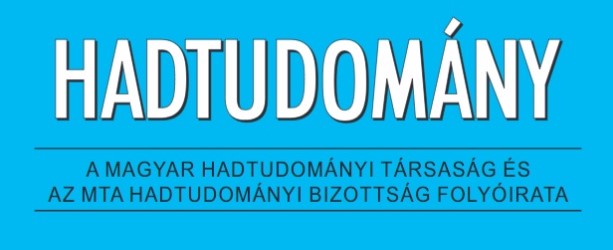Compartive longitudinal research based on results of 2004-2007 screening test in the Hungarian Defence Forces
Abstract
We firstly executed in the course of the present examination screening at Hungarian Defence Forces employees among 2004−2007 substance the summing up of data. Onto the screening period among 2004−2007 surveyed at employees of Hungarian Defence Forces we mapped their typical sicknesses. Then the 2007 yearly ones for the establishment of risk factors, and the exploration of their priority row followed. The age groups' morbidity data, and in the age groups significantly appearing prevalence lifting indicators occurred. The examination of the significant differences between the garrisons followed this in the concern of the health behaviour and health damaging features, the morbidity one, and prevalence in connection with indicators. We analysed the contexts of the health behaviour features, health damaging risk factors and the sicknesses appearing at the Hungarian Defence Forces. Summarily we can relate that the present is screening results (one between 2004−2007) establishment considering several ones are typical of Hungarian Defence Forces specially risk factor
and therefore these we identified their pattern, which help of health preventive programs supporting in a more efficient forming and conducting. Therefore we are able to develop a successful health protection program to the sicknesses and the most important risk factors which can be bound to the health damaging behaviours, and they are the protective factors, which play an enormous role in the protection. These risk ones, as well the protective factors examined separately; we distinguished general risk factors, family risk factors which can be bound to anamnesis and behaviour risk factors so, concerned protective factors. Our results show however, that several, in a considerable proportion in the case of sickness on a sign, like the sicknesses of the respiratory system, the changes found in the digestive system and in the case of the pathological dental changes equally, the general risk factors are with identical weight on a sign near (8 factor models) and the other health behaviour risk factors (e.g. working hours). This means that the presence of a general risk factor
would not lead to the development of the given illness possibly, but two or three additional health behaviour risk factor being connected, intensifying the effect of the first general risk factor, as leads to sickness. In generally it is can be related, that these risk factors are in a special pattern in the case of current issue sickness, which ones not only as the concomitant of the sickness are appreciable, but their role played in the given sickness taking shape. A risk factor list encircling all of all areas of life occurred (from the alcohol consumption habits the working hours and through the question of the cooking habits until the role of the physical activity, and sport), which confirms in a multilevel view the necessity of health preventive programs running paralleled. We also may call the attention for the positively endangered groups at Hungarian Defence Forces, as the necessity of intervention formed applying the results of the present comprehensive article, taking the gender differences into consideration, and considering the corps' level.



